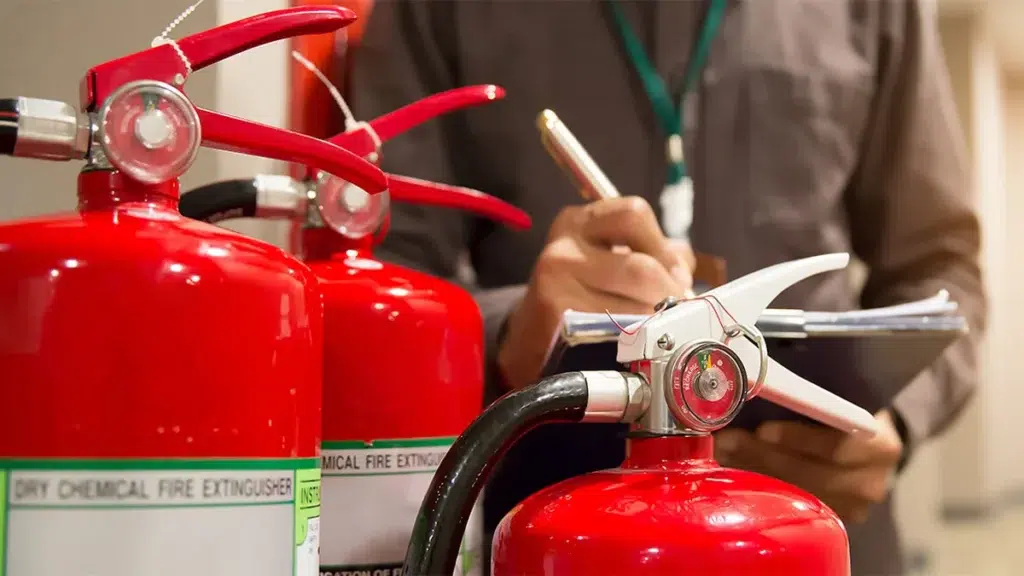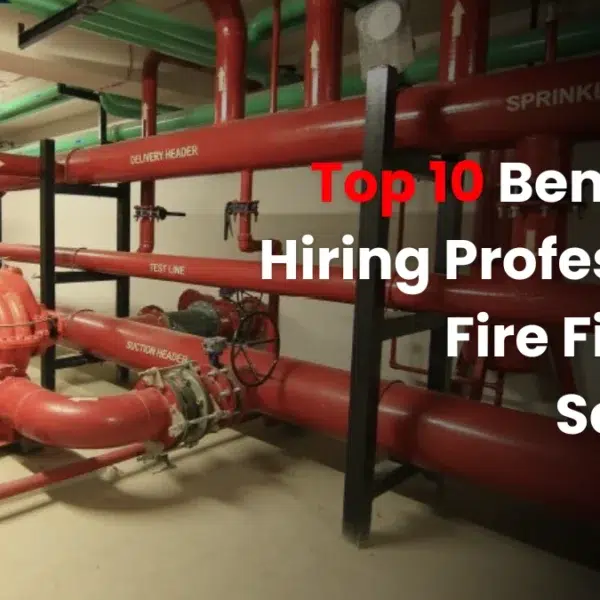Top 10 Must-Have Fire Safety Equipment for Homes and Businesses


Top 10 Must-Have Fire Safety Equipment for Homes and Businesses
Fire safety is a very important concern for homes and commercial belongings. Keeping the right fire safety equipment in place can indicate the difference between a little incident and a fatal event. This comprehensive article will explore the top 10 must-have fire safety equipment for homes and businesses.This article will help you learn the various types and how to select the best one for your business. With the right system, you can save your employees, customers, and property from the dangers of fire.
Top 10 Must-Have Fire Safety Equipment for Homes and Businesses
1. Fire Extinguishers
2. Fire Sprinkler Systems
3. Smoke Detectors
4. Carbon Monoxide Detectors
5. Fire Blankets
6. Emergency Lighting
7. Fire Doors
8. Reels for Fire Hoses
9. Fire Signage
10. Fire barriers
1. Fire Extinguishers
Fire extinguishers must be installed for every establishment. These extinguishers should be easily available, visible, fully charged, and tested regularly. They are often the first line of defense utilized to contain or put out fires, saving lives and avoiding expensive damage. They need to be located close to an escape route, high up on the wall. When using a fire extinguisher, keep in mind the PASS technique: pull the pin, aim low, slowly compress the lever, and sweep it from side to side.
2. Fire Sprinkler Systems
Sprinkler systems for commercial buildings are essential for lowering property damage and fatalities at work. NFPA 13 is the standard for the design and installation of sprinkler systems. Sprinklers are the only means of significantly reducing smoke, flames, and heat, but extinguishers can put out small fires.
3. Smoke Detectors
Alarms reduce the risk of death in a fire by half. These should be attached so that if one goes off at your office, they all go off. They can detect both burning and smoldering fires. Test your smoke alarms at least once a month and replace the batteries at least once a year. After ten years, it is suggested that the alarm be replaced.
4. Carbon Monoxide Detectors
In many commercial structures, these alarms and detectors are a necessary but often disregarded component. They warn people to the presence of carbon monoxide, an odorless, invisible gas that is produced when fuels such as natural gas, oil, propane, methane, and gasoline do not completely burn. If employees inhale a small amount of hazardous gas over an extended time, it might cause harm or even death. The U.S. fire department reacts to thousands of carbon monoxide-related incidents yearly.
5. Fire Blankets
These safety equipments are used to extinguish recently ignited fires. The blankets are helpful in preventing the spread of the fire. There are benefits to using a blanket and a fire extinguisher altogether. By keeping oxygen from reaching to the fire, these non-flammable blankets help put out flames at temperatures as high as 900 degrees.
6. Emergency Lighting
Power outages due to fires may be alarming and dangerous for everyone inside the building.
For this is why emergency lighting is essential for guiding people wishing to evacuate to safety. Emergency lighting must be installed per law, and we can install devices that direct individuals to the right fire exits.
We may perform regular checks to make sure your property complies with the law and that all of our emergency lighting systems are in accordance with BS 5266-1.
7. Fire Doors
Businesses should have fire doors installed. By keeping the fire in one room and reducing its spread as people leave the building, these doors help in a speedy and secure evacuation in the case of a fire. Also, a lot of fire doors have seals to keep smoke from leaving the space.
8. Reels for Fire Hoses
Class-A flames can be easily extinguished with fire hose reels. Non-conductive materials like paper, rubber, wood, etc., are what fuel flames. Since fire hose reels release water, they are unable to deal with electrical fires. A different type of fire protection equipment designed for fighting electrical fires is C02 fire extinguishers.
9. Fire Signage
All fire safety equipment should be provided with standard signs. In an emergency, these help people with locating and identifying the kind of fire safety equipment that is easily accessible. There are a number of regulations to take into account when it comes to fire safety signage. Every piece of equipment has an Australian installation and maintenance standard. More details on signs and their placement can be found in the guide that goes with it.
10. Fire barriers
Fire barriers are great at stopping smoke and fire from spreading to other parts of a building by sealing gaps in roof voids, hollow walls, and other openings. Since every building has specific needs, our staff installs fire barriers in a customized manner while making sure that BS 9991 and BS 9999 are always followed.
Conclusion
Prioritizing fire safety is most important for safeguarding lives and property in homes and businesses.You can be better planned to handle unexpected fires, reducing the risk of severe damage and providing important time for safe evacuation with the right equipment. Each part off fire safety equipment—whether a fire extinguisher, smoke detector, or emergency lighting system—serves a critical purpose and works in tandem with other tools to enhance fire preparedness. Regularly maintaining and testing these devices is equally important to ensure they work as needed in an emergency. By investing in these fire safety essentials, you’re investing in peace of mind, knowing you’ve taken steps to protect those who matter most.
fAq
How always should I check my fire safety equipment?
Check smoke and carbon monoxide detectors monthly basis and replace their batteries yearly. Fire extinguishers should be checked annually and recharged or replaced if damaged. Sprinkler systems need periodic professional inspections as well.
Can I install a fire sprinkler system in my home?
Yes, residential fire sprinkler systems are available and can provide significant protection, although they are more commonly found in commercial settings. Installation should be done by certified professionals and follow local codes.
How does a fire blanket work, and when should I use it?
Fire blankets smother for small fires because of their cutting off oxygen supply. They’re especially useful in kitchen fires or when clothing catches fire. Simply cover the fires with the blanket to extinguish them.
Are fire doors necessary in small businesses?
Yes, fire doors are important even in small businesses as they control the spread of fire, allowing safe evacuation. Local regulations often require them, particularly in areas leading to exits.
https://youtube.com/watch?v=cveuVXqrYq4https%3A



